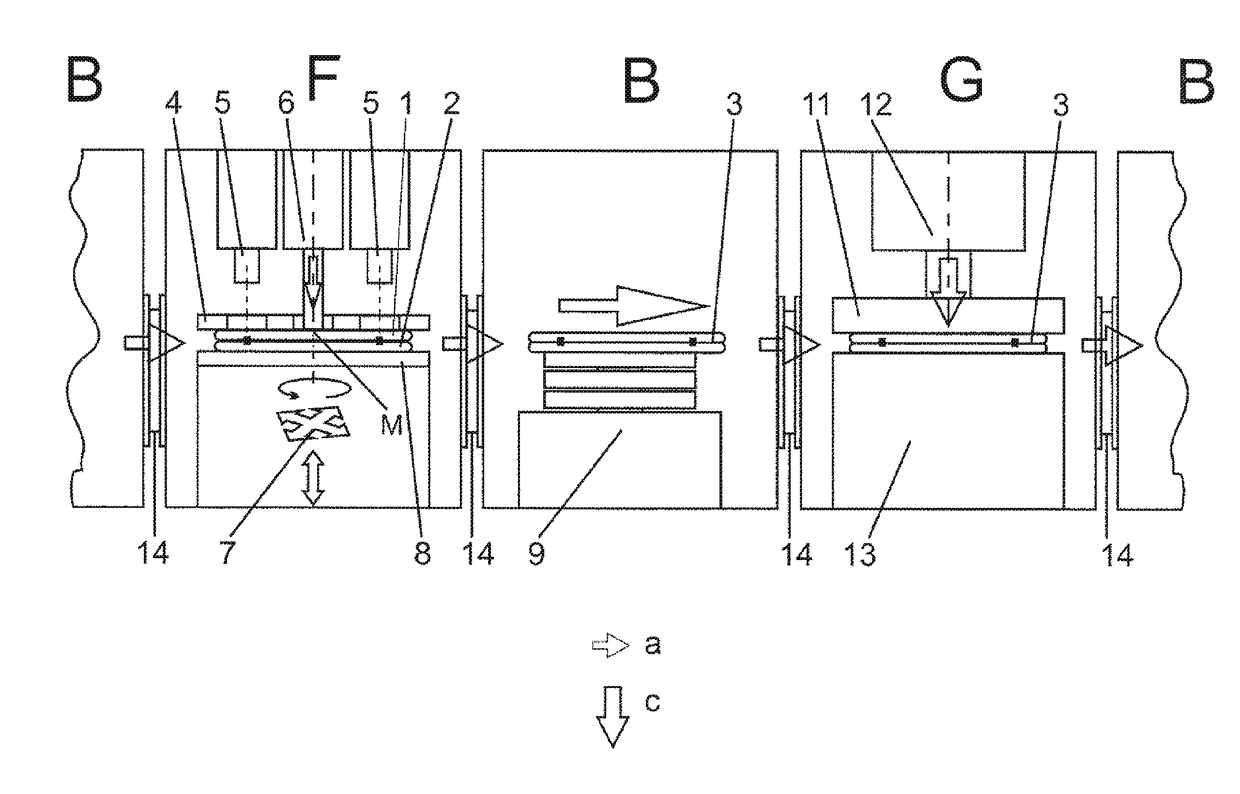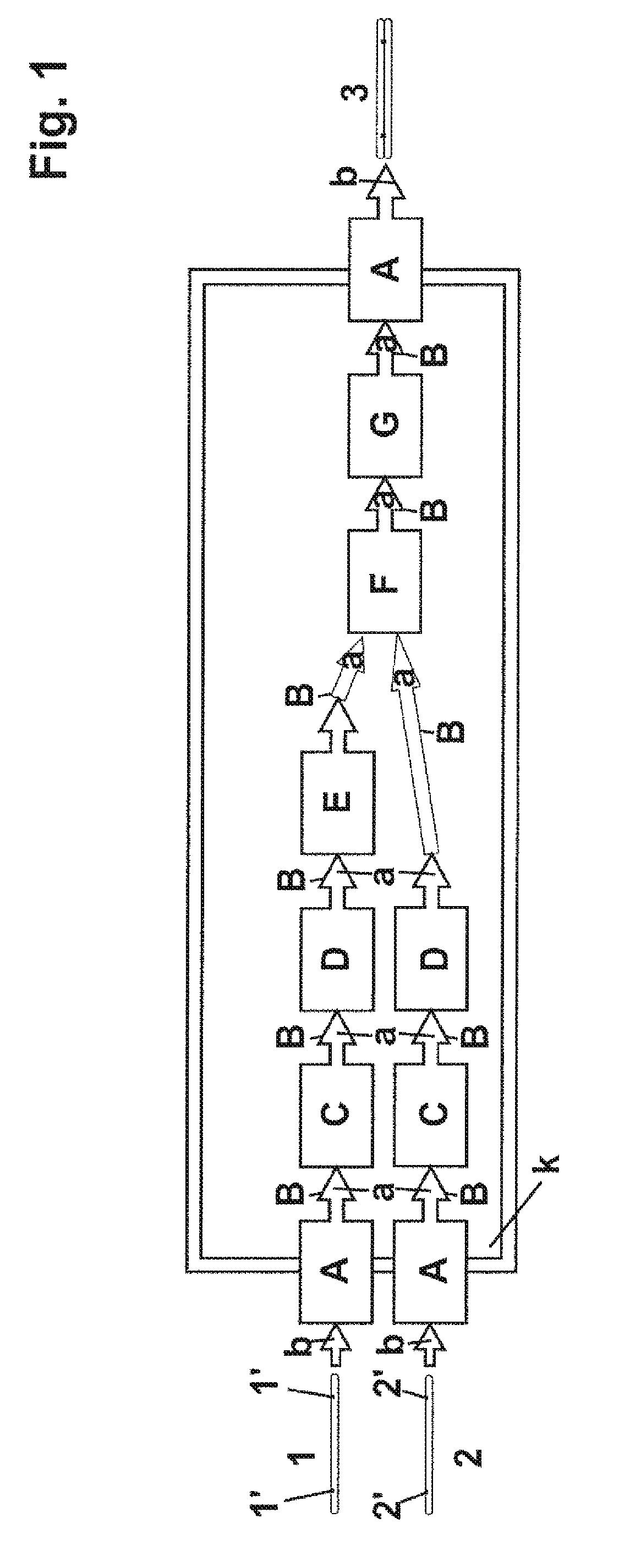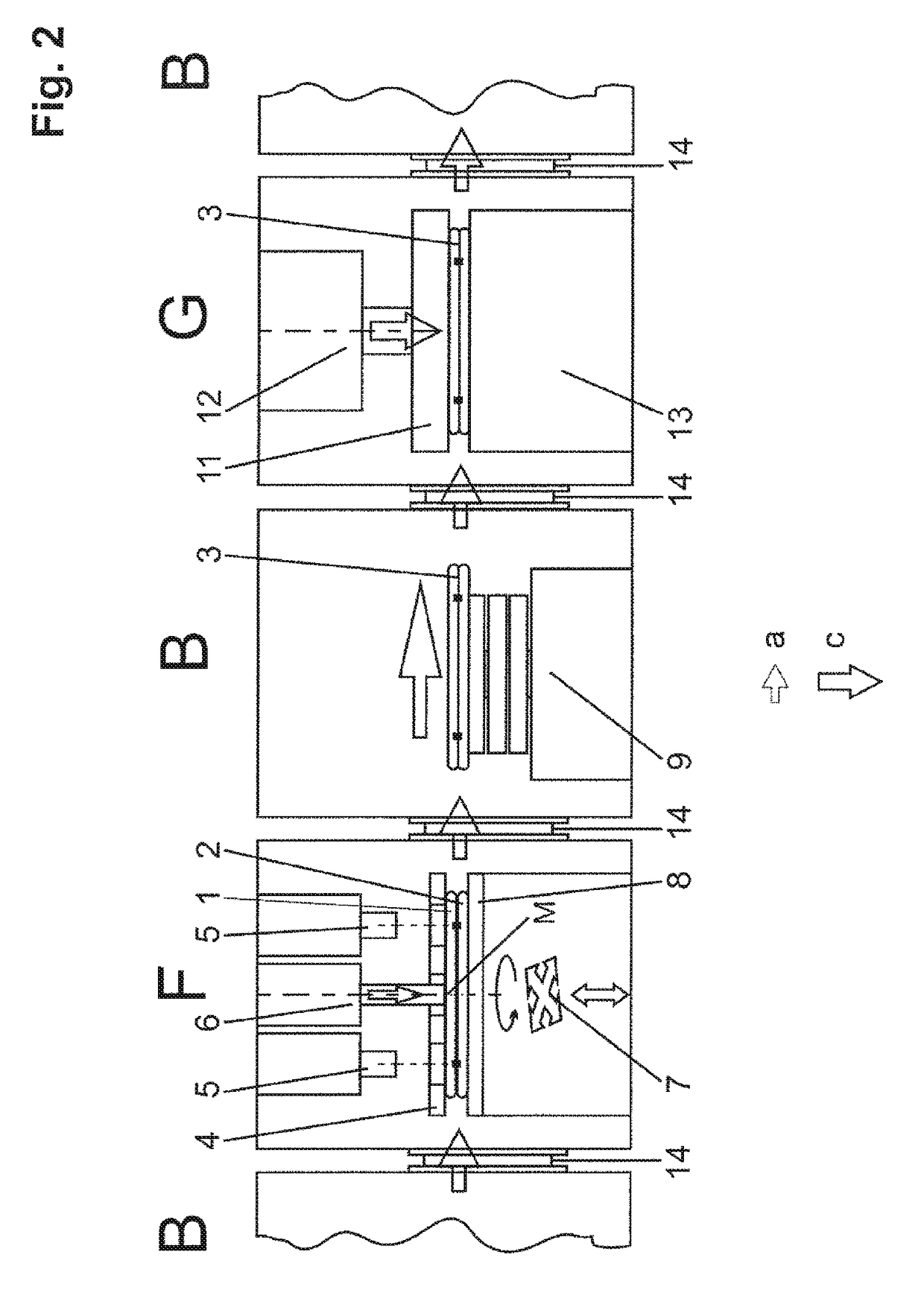Method and device for prefixing of substrates
a substrate and prefixing technology, applied in the direction of non-electric welding apparatus, electrical apparatus, basic electric elements, etc., to achieve the effect of increasing the adhesion, reducing the mean distance of the surface, and increasing the binding energy
- Summary
- Abstract
- Description
- Claims
- Application Information
AI Technical Summary
Benefits of technology
Problems solved by technology
Method used
Image
Examples
Embodiment Construction
[0144]The invention is explained in more detail below based on an embodiment. The features described therein can be used both individually and in any combinations.
[0145]The embodiment that is shown is based in particular on the idea of substrates 1, 2 making contact in a manner that is coordinated and simultaneously almost on their own at selected points and thus being fixed to one another as a substrate stack 3, by at least one of the two substrates, preferably the upper substrate 1, being applied with a pressure die 6 preferably concentrically to a center M of the substrate stack and the substrates being prefixed by this contact, in particular in the center M of the upper first substrate 1.
[0146]In a unit according to the invention, in particular the process steps of preadjustment, pretreatment (oxide removal and / or amorphization), alignment and prefixing, bonding, and optionally an inspection (metrology) are integrated. The unit has in particular at least one module group with a ...
PUM
| Property | Measurement | Unit |
|---|---|---|
| pressure | aaaaa | aaaaa |
| roughness index Ra | aaaaa | aaaaa |
| pressure | aaaaa | aaaaa |
Abstract
Description
Claims
Application Information
 Login to View More
Login to View More - R&D
- Intellectual Property
- Life Sciences
- Materials
- Tech Scout
- Unparalleled Data Quality
- Higher Quality Content
- 60% Fewer Hallucinations
Browse by: Latest US Patents, China's latest patents, Technical Efficacy Thesaurus, Application Domain, Technology Topic, Popular Technical Reports.
© 2025 PatSnap. All rights reserved.Legal|Privacy policy|Modern Slavery Act Transparency Statement|Sitemap|About US| Contact US: help@patsnap.com



